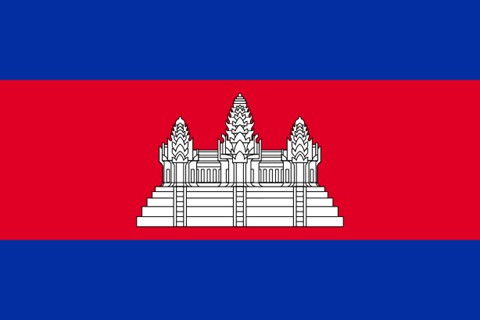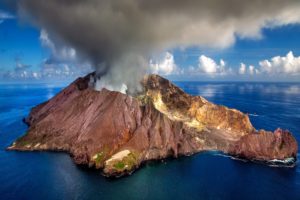[Table of Contents]
- Check the condition of the volcano
- Check the volcanic eruption alert levels

- Check the ash fall forecasts
- Protect yourself from volcanic ash
1.Volcanic disaster
Japan is one of the most volcanic countries in the world.
As of June 2020, there are 111 active volcanoes, including Sakurajima, Miyakejima, Mt. Aso, and Mt. Unzen.
“Active volcanoes” are volcanoes that have erupted within the past 10,000 years and volcanoes that are currently active in fumarolic activity (source: Japan Meteorological Agency).
<Locations of active volcanoes in Japan>
Volcanic disasters include pyroclastic flows, snow-melting volcanic mudflows, lava flows, large volcanic rocks, small volcanic rocks, volcanic ash, volcanic gas, and tsunamis. Large volcanic rocks, pyroclastic flows, and snow-melting volcanic mudflows caused by eruptions are especially dangerous and fatal, as it does not allow much time for people to evacuate.
Predicting the timing and magnitude of a volcanic eruption is very difficult, and a volcanic eruption may occur suddenly. In September 2014, a steam explosion suddenly occurred on Mt. Ontake. As a result, 63 climbers either died or went missing.
Thus, when visiting an active volcano, it is important to check and understand the eruption conditions in advance, and to be attentive at all times.

2.What to do during a volcanic eruption
To minimize disasters caused by volcanoes, it is important to check the information about the volcanic eruption.
- Check the condition of the volcano
You can check the condition of the volcano by looking at the eruption warnings, forecasts, volcanic disaster prevention maps, and volcano hazard maps released by Japan Meteorological Agency.
- Eruption warnings/forecasts (map display) by Japan Meteorological Agency
https://www.jma.go.jp/jp/volcano/map_0.html
You can check the eruption warnings and forecasts presented by Japan Meteorological Agency on the map.
- “Information page for climbers on an active volcano” by Japan Meteorological Agency
http://www.data.jma.go.jp/svd/vois/data/tokyo/STOCK/activity_info/map_0.html
The information of each volcano can be seen on the information released by Japan Meteorological Agency.
Especially when you go to an active volcano, make sure to check the latest information.
- “Database on Volcanic Hazard Maps and Reference Material” by National Research Institute for Earth Science and Disaster Prevention
http://vivaweb2.bosai.go.jp/v-hazard/
- Check the volcanic eruption alert levels
There are five levels of volcanic eruption alert. Each level indicates the actions that need to be taken by local residents or climbers.
Use this as a reference when volcanic activity becomes active and warnings or emergency warnings are issued.
Sited from Japan Meteorological Agency website
| Classification | Abbreviated Term | Target Area | Alert Level | Expected Volcanic Activity | Action to be taken by Residents | Action to be taken by Climbers |
| Emergency warning | Volcanic warning (residential area) | Residential and non-residential areas nearer the crater | Level 5 | Eruption or imminent eruption that may cause serious damage in residential and non-residential areas nearer the crater. | Evacuate from the danger zone. (Target areas and evacuation measures are determined in line with current volcanic activity.) | |
| Level4 | Possibility or increasing possibility of eruption that may cause serious damage in residential and non-residential areas nearer the crater. | Prepare to evacuate from alert areas. Have disabled people evacuate. (Target areas and evacuation measures are determined in line with current volcanic activity.) | ||||
| Warning | Volcanic warning (near the crater) | Non-residential areas near the crater | Level3 | Eruption or possibility of eruption that may severely affect places near residential areas (possible threat to life in such areas). | Stand by and pay attention to changes in volcanic activity. Have disabled people prepare to evacuate in line with current volcanic activity. | Refrain from entering the danger zone. (Target areas are determined in line with current volcanic activity.) |
| Around the crater | Level2 | Eruption or possibility of eruption that may affect areas near the crater (possible life-threatening areas). | No action required. | Refrain from approaching the crater. (Target areas around the crater are determined in line with current volcanic activity.) | ||
| Forecast | Forecast | Inside the crater | Level1 | Volcanic activity is calm: Possibility of volcanic ash emissions or other related phenomena in the crater (possible threat to life in crater). | No restrictions. (In some cases, it may be necessary to refrain from approaching the crater.) |

3.Volcanic ash
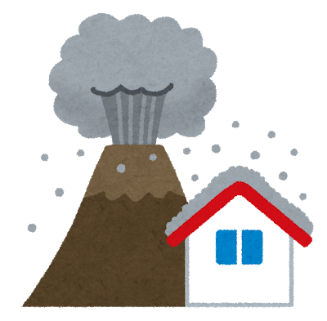
When a volcano erupts, it causes volcanic ash.
Unlike large volcanic rocks and pyroclastic flows, the volcanic ash is less likely to be life-threatening in a short time. However, if a large amount of 2 mm- or less particles spread over a wide area by the wind, they may cause health damage, agricultural damage, transportation cost damage, and damage to lifelines such as power outages.
- Check the ash fall forecasts
Check the ash fall information of active volcanoes near your area.
- Ash Fall Forecasts by Japan Meteorological Agency
https://www.jma.go.jp/jp/ashfall/index.html
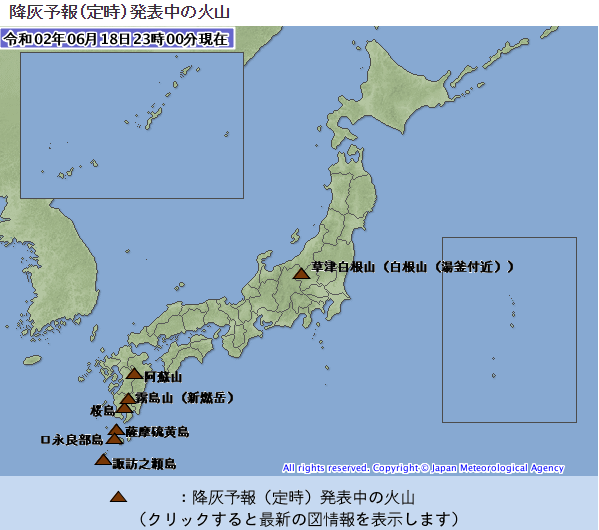
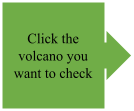

- Protect yourself from volcanic ash
The volcanic ash is very small and enters the body when breathing.
If people with bronchitis, heart disease, or even healthy people inhale volcanic ash, it may damage the lungs and affect the body.
Please be careful to not inhale it.
- Refrain from going out
- Close windows and doors
Make sure the volcanic ash does not enter your house.
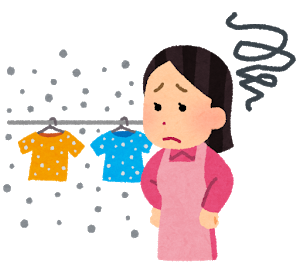
- Refrain from driving as much as possible
When volcanic ash falls, it would be difficult to see clearly. The ash would also pile up on the roads making it slippery, and driving would be dangerous. - Use an umbrella or wear a dust mask
When volcanic ash enters the lungs, it may cause coughing and suffocation.
When going out is necessary, use an umbrella or a mask. Try not to inhale the ash as much as possible.
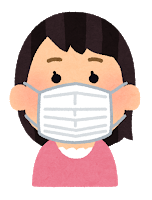
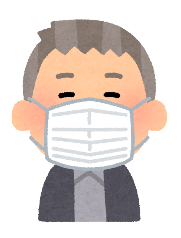
- Remove contact lenses and wear glasses
If you get volcanic ash in your eyes while using contact lenses, you may feel discomfort, or it may cause pain or itching.
Never rub your eyes with your hands. Wash them with water to remove the ash.
If the discomfort remains, getting professional help from an eye doctor is recommended.
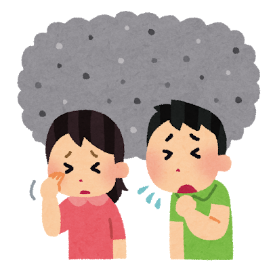
- Protect your skin
When volcanic ash touches the skin, it may cause irritation.
Especially if there are scratches, it may increase the pain, or germs may enter.
・The above contents are created with reference to the following information. Please note that if there is a change in the content of the reference source, it may take some time before it is reflected on this site.
[Sources]
- “Volcanic disasters that occurred in the past” by Japan Meteorological Agency
http://www.data.jma.go.jp/svd/vois/data/tokyo/STOCK/kaisetsu/volcano_disaster.htm - “What is an active volcano?” by Japan Meteorological Agency
https://www.data.jma.go.jp/svd/vois/data/tokyo/STOCK/kaisetsu/katsukazan_toha/katsukazan_toha.html - “The “Ash Fall Forecast” that quickly forecasts the amount of volcanic ash in addition to the area where it falls has been upgraded!” by Government Public Relations Online
https://www.gov-online.go.jp/useful/article/201502/1.html#anc03 - “What kind of disaster may occur in a volcanic eruption?” by Prime Minister’s Office
https://www.kantei.go.jp/jp/headline/bousai/funka.html







